Ready to learn more?
Get all the details straight to your inbox!
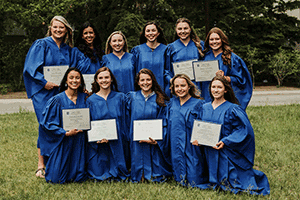
Luther College students are U of R students and receive all the same benefits. Upon graduation you will receive a U of R degree.
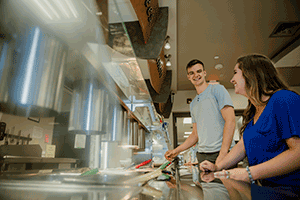
Eating better means studying better. The Luther Cafeteria offers fresh, healthy, nutritious meals seven days a week with a self-serve “all-you-care-to-eat” concept students prefer.
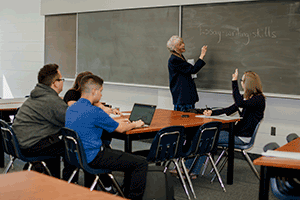
Smaller class sizes at Luther College means more individualized attention and better connections with your professors, classmates, and academic advisors.
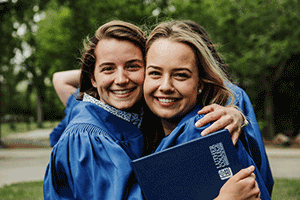
Luther students can register in Arts, Science, or Media, Art, and Performance. Luther students are U of R students and receive a U of R degree.
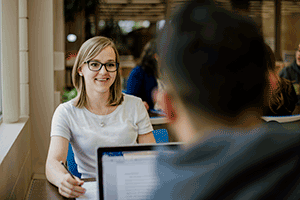
Luther College students are eligible for nearly $100,000 in academic awards – in addition to scholarships and bursaries awarded by the U of R.
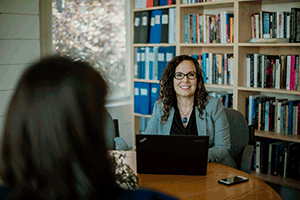
Free enrolment counselling support and invaluable one-on-one academic advising are available for all programs at Luther College.
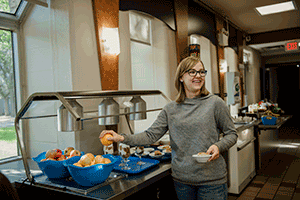
Living in The Student Village at Luther College, our student residence, comes with a choice of healthy, nutritious meal plans. That means no grocery shopping, no meals to cook, and no dirty dishes to worry about. You can focus on your studies and wellness!
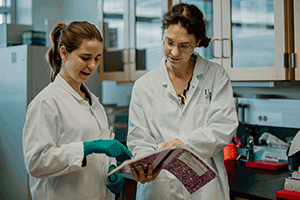
Luther College offers Bundles programs that group together first-year students and classes to give you a great start and help ease the transition from high school to university.
Get all the details straight to your inbox!
By Dr. Mary Vetter (Biology)
Interdisciplinary Studies (IDS) 290AB, Ecomuseums: Sense of Place, was taught for the second time in the Fall 2015 semester. Both IDS 290AA (Nonprofit and Voluntary Organizations: Cornerstones of Society) and 290AB are project-based, participatory-experiential, and community-engaged courses. Following an introduction to theoretical background, students work on real-world, real-time projects that have been identified through consultation with a community beyond the university. The projects are chosen to build students’ research, career-related, oral and written communications skills, and to provide important benefits directly to the community. All Interdisciplinary Studies courses at the University or Regina are taught at Luther College, and include IDS 100 and 101 (examination of complex issues from historical and contemporary vantages, respectively) as well as IDS 200 International Study Abroad courses.
The Fall 2015 Ecomuseums course worked with the communities of White City, Balgonie, and Pilot Butte in the Rural Municipality of Edenwold, just east of Regina. This region is in the process of developing the White Butte Ecomuseum. A community comes together to form an ecomuseum to explore, interpret and preserve its heritage in a multifaceted and dynamic way, and to promote sustainable development.[1] Economic stimulation through tourism is often a goal of ecomuseums, but most importantly ecomuseums exist to sustain and promote cultural, natural, and social heritage. Currently there are more than 300 ecomuseums in the world; they vary in size from a building or two, to hundreds of square kilometers. Saskatchewan has a vibrant ecomuseums movement, with many under development. Ecomuseums develop organically and from the ground up out of a sense of place – local people recognize the importance of a place and the things that happen there. There are various models of place attachment, but all include personal identification with a place, dependence on a place, social bonding to that place through friends and family, and bonding to nature.[2] The community forms an ecomuseum to sustain what is important to them – the things that attach them to that place. Their presence and activities in that place produce stories, giving that place meaning to them and to others.
The Ecomuseums course instructor, Dr. Mary Vetter, and Dr. Glenn Sutter, Curator of Human Ecology at the Royal Saskatchewan Museum, met with the White Butte Ecomuseum group in spring and summer 2015, and the whole class met with the community in September. The discussion in these meetings identified that interviewing long-time residents of the region and producing digital stories focusing on the interviewees’ personal history, community history, memories, and attachment to the region would be of immense help to the ecomuseum effort and would provide excellent learning opportunities for the students. Before beginning the interviews, the class studied ecomuseums, specifically: how these differ from traditional museums; the global ecomuseum movement; the nature and expression of place attachment; introductory background on the history and culture of the communities in the RM of Edenwold; how to conduct interviews. We worked with Evie Ruddy to learn how to construct digital stories by identifying a theme, editing the audiorecording, and adding images to produce a movie file.
The community suggested names, and we submitted an application to the Research Ethics Board at the University of Regina to do the interviews and, if interviewees agreed, to publish the digital stories. We met with 11 local residents, all of whom graciously gave their permission for their interviews and digital stories to be shared. The students presented their work to the community in early December 2015.
Linked to this article are five of the ten digital stories produced by the students. They are chosen to illustrate the range of themes and insights we heard.
The first digital story comes from Ernest and Hildegard Schwartz, who were some of the first people living in what is now White City. Ernest was a developer, and both were actively involved in their community. Hildegard is also an alumna of Luther College High School. They speak about the changes and significant events over the years, and the critical importance to prairie communities of volunteering.
The second digital story is from Lill Jardine. She grew up on a farm just east of White City and shares her memories of learning English to go to school, the Depression years, and the farm and all the buildings she and her husband built entirely on their own. Lill attended Pibroch School, which was moved into White City after extensive community fundraising and labour; it served as a community hall and now is a playschool. Lill has a small museum on the farm she and her husband built, and contributed many collections to displays in White City.
The third digital story is from Anita Ring, who lives on a farm a few miles north of Pilot Butte. Anita grew up around Edenwold, the granddaughter of German immigrants who established farms and were expert brick masons. Using bricks from the old Pilot Butte brickyards, her forebears built many buildings around Edenwold and in the city of Regina, including Government House. Anita shares her experiences teaching school, farming, and volunteering.
Elder Norma Jean Byrd contributed the fourth digital story presented here. She speaks of the critical importance of having children learn about and spend time in nature. She teaches Aboriginal culture throughout the Regina school system, leads field trips, and works with young people to help them understand and value their Aboriginal heritage.
The fifth digital story was contributed by Wayne Kiel, a retired teacher and long-time resident of Balgonie. He speaks about the many community activities, all run by volunteers, that enrich life in the town and the joys of living in small-town Saskatchewan.
All of the interviewees have a deep attachment to the region, and each community has its own history and is valued. The interviewees hope that more stories of residents will be collected, preserved, and celebrated. Working together on common causes was a common theme in the interviews, and people were often wistful about times in the past when the community volunteered and played together. Interviewees expressed concern that heritage resources are at risk of neglect or even disappearing. They often referred to the beauty and diversity of the natural environment, and how some of that diversity is disappearing. All raised families here and consider it their long-time home; and they spoke of their deep ties to friends, family, and neighbours.
The Ecomuseums course was taught in Fall 2014 for the first time. That semester, we worked with the Calling Lakes Ecomuseum group in the Qu’Appelle Valley, centred on Fort Qu’Appelle and Katepwa Lake. In their course evaluations, students were very enthusiastic, as illustrated by these comments: “It was an adventure! We all contributed, learned and I felt as if what I did was valuable on a real-world scale”; “This course was so different from any other course I’ve done. Very good learning opportunity for applicable skills in my career after graduation”; and “loved how we helped others out”. In an article published in the 2014 Museums & Sustainability magazine of The Museums Association of Saskatchewan, Aura Lee MacPherson, speaking on behalf of the Calling Lakes Ecomuseum, said “I wasn’t convinced that a second-year class could do anything, but it was like a million dollar gift to the water”; and “This saved us years worth of work.”
The Ecomuseums course will be taught again in Fall 2016. We look forward to choosing the community this summer with whom the course will work, and the projects that will come out of this next university-community collaboration!
Bill Armstrong
Dustin Koch
Jennie Rennie
Kandra Forbes
Katherine Ottley
Dr. Mary Vetter
[1] Peter Davis, Ecomuseums: A Sense of Place, 2nd Ed. (London and New York: Continuum International Publishing Group, 2011).
[2] Christopher M. Raymond, Gregory Brown, and Delene Weber, “The measurement of place attachment: personal, community, and environmental connections”, Journal of Environmental Psychology 30, no. 4 (2010), DOI: 10.1016/j.jenvp.2010.08.002.